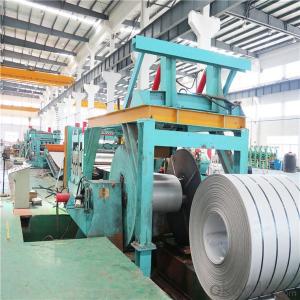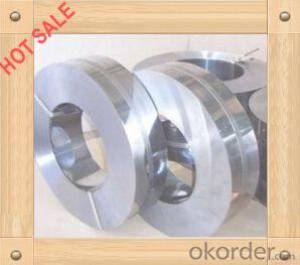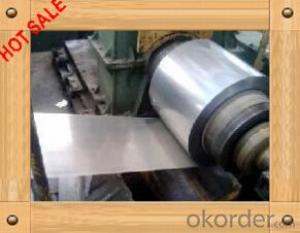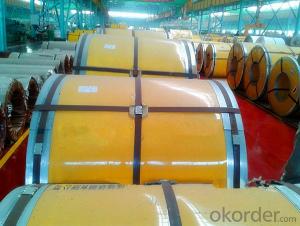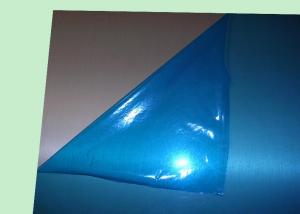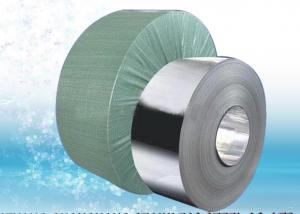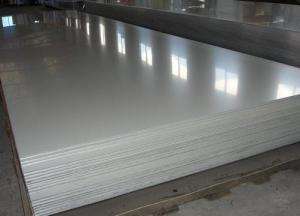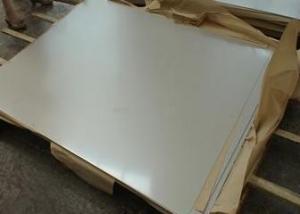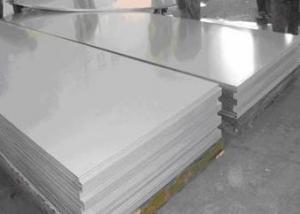ASTM 2B BA 201 202 Stainless Steel Sheet Metal Coil price
- Loading Port:
- Shanghai
- Payment Terms:
- TT OR LC
- Min Order Qty:
- 5 m.t.
- Supply Capability:
- 100000 m.t./month
OKorder Service Pledge
OKorder Financial Service
You Might Also Like
Specification
Material | 201/202/301/304/304L/310S/316/316L/316Ti/321/410/420 |
Technique | Old Rolled, Cold Drawn, Hot Rolled |
Standard | ASTM,AISI,JIS,GB,DIN,EN |
Thickness | 0.3mm-100mm or as your requirement |
Width | 100mm-3000mm or as your requirement |
Length | 1000mm-10000mm or as your requirement |
Surface Treatment | BA,2B,No.1,No.4,No.8,HL,8K,Brush |
Packing | 1.Export sea worthy package + water proof paper + wooden pallet 2. Max Loading 26.5mt for each 20Gp container 3.Safe loading and fixing Professiona teams 4. Professional shipping line
|
Delivery | 5 days after received the 30% deposit of T/T or L/C |
Payment | T/T,30%payment in advance,70%T/T after the copy of B/L or L/c at sight |
Application | Stainless Steel Sheets are widely used in below fields: 1: Construction field, shipping building industry 2: Petroleum and Chemical Industries 3: Food and Mechanical Industries |
Marking: as per our standard or clients’ request
Surface treatment: Galvanized, coated, anti-finger etc
Quality: Promised quality, if any problem, return money for compensation
MOQ: 25 tons per size
Deliver Time: Depends on specification and order quantity.
Certificate: Mill Testing Certificate
Payment terms: T/T, L/C D/P etc

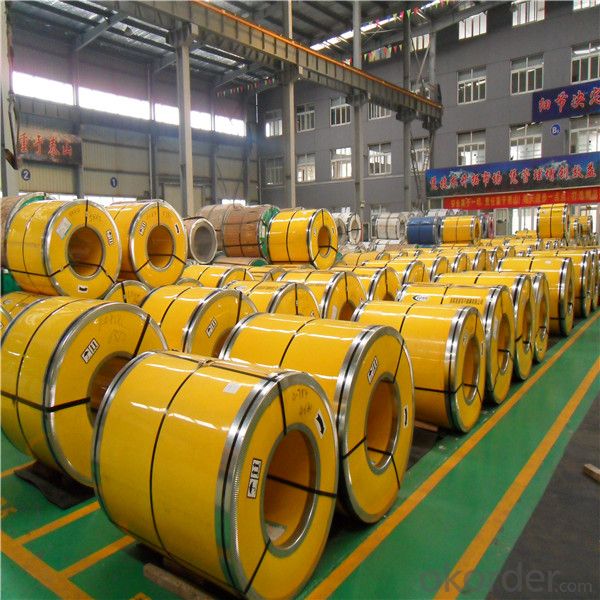
- Q: What are the recommended guidelines for machining 111 stainless steel strips?
- To ensure optimal results when machining 111 stainless steel strips, it is advised to adhere to certain guidelines. These guidelines include: 1. Cutting tools: Utilize cutting tools that are specifically designed for machining stainless steel. Suitable options include carbide or high-speed steel tools. It is important to ensure that the tools are sharp and in good condition. 2. Cutting speed: Maintain a moderate cutting speed to prevent excessive heat buildup. The recommended cutting speed for 111 stainless steel strips is generally between 80 and 100 surface feet per minute (SFPM). 3. Feed rate: Use a feed rate that allows for efficient material removal without causing excessive wear on the tool. A feed rate of 0.005 to 0.015 inches per revolution (IPR) is typically suitable for 111 stainless steel strips. 4. Coolant and lubrication: Apply a suitable coolant or lubricant during the machining process to reduce friction, heat, and tool wear. Depending on the machining conditions, water-soluble or oil-based coolant/lubricant can be utilized. 5. Tool geometry: Select the appropriate tool geometry, such as a positive rake angle, to minimize cutting forces and improve chip evacuation. This helps prevent work hardening and tool breakage. 6. Workholding: Ensure secure and rigid workholding to minimize vibrations and enhance surface finish. Clamps or vice grips that provide sufficient grip without distorting the strips should be used. 7. Chip control: Employ effective measures for chip control, such as chip breakers or chip evacuation systems, to prevent chip buildup and protect the tool and workpiece from damage. 8. Quality control: Regularly monitor the machining process to ensure dimensional accuracy, surface finish, and adherence to tolerances. Appropriate measuring tools, such as calipers or micrometers, should be used for quality control checks. 9. Safety precautions: When machining stainless steel, it is essential to follow safety guidelines and wear appropriate personal protective equipment (PPE). This includes safety glasses, gloves, and hearing protection. It is important to note that these guidelines are general recommendations. Depending on the specific machining conditions, adjustments may be required. Factors such as strip width and thickness, desired surface finish, and the specific machinery being used should be taken into consideration. Consulting the manufacturer's recommendations and performing test cuts can help optimize the machining process for 111 stainless steel strips.
- Q: Can stainless steel strips be used in electrical applications?
- Yes, stainless steel strips can be used in electrical applications. Stainless steel is known for its excellent corrosion resistance and high temperature resistance, making it a suitable material for electrical components and fixtures. It is commonly used in electrical enclosures, connectors, terminals, and grounding plates. Additionally, stainless steel has good electrical conductivity, which is essential for proper functioning of electrical systems.
- Q: How do you determine the weight of a stainless steel strip?
- To determine the weight of a stainless steel strip, you need to know two key factors: the dimensions of the strip and the density of stainless steel. Firstly, measure the length, width, and thickness of the stainless steel strip using a ruler or calipers. Ensure you have accurate measurements in the same unit of measurement, such as inches or millimeters. Next, find the density of stainless steel, which is typically around 7.93 grams per cubic centimeter or 7930 kilograms per cubic meter. This value may vary slightly depending on the specific grade and composition of the stainless steel. Now, you can calculate the weight of the stainless steel strip using the formula: Weight = Length x Width x Thickness x Density If your measurements are in inches, ensure to convert them to the appropriate unit for density (e.g., cubic inches to cubic centimeters). Similarly, if your measurements are in millimeters, convert them to meters before multiplying by the density. After performing the calculations, you will have the weight of the stainless steel strip in grams or kilograms, depending on the unit of density used. Remember to consider any additional factors that may impact the weight, such as the presence of coatings or surface finishes, which can add extra weight to the strip.
- Q: Can stainless steel strips be formed into complex shapes?
- Yes, stainless steel strips can be formed into complex shapes. Stainless steel is known for its versatility and ductility, which allows it to be easily formed and shaped. Through various forming techniques such as bending, rolling, and stamping, stainless steel strips can be manipulated to create intricate and complex shapes. Additionally, stainless steel's high strength and resistance to corrosion make it an ideal material for applications that require complex shapes, such as architectural structures, automotive components, and kitchen appliances.
- Q: How do stainless steel strips handle exposure to solvents?
- Stainless steel strips possess exceptional resistance to solvents, renowned for their ability to endure exposure to various solvents without significant harm or corrosion. The inclusion of a substantial amount of chromium in the composition of stainless steel results in the formation of a protective layer known as chromium oxide, which acts as a barrier against solvents. This protective layer prevents solvents from infiltrating the surface of the steel and causing any detrimental effects. Moreover, stainless steel strips exhibit low reactivity with solvents, rendering them suitable for environments where chemical exposure is commonplace. They exhibit resistance to numerous organic solvents, including alcohols, acetone, and hydrocarbons, as well as certain inorganic solvents such as acids and bases. It is crucial to note that although stainless steel strips generally possess exceptional resistance to solvents, their performance may vary depending on the specific type and concentration of the solvent, as well as the duration of exposure. In certain instances, prolonged exposure to aggressive solvents or high concentrations may result in slight discoloration or etching on the surface of the stainless steel. To ensure optimal performance and longevity, it is advisable to select the appropriate grade of stainless steel for particular solvent applications. Seeking guidance from stainless steel manufacturers or industry experts can offer valuable assistance in selecting the most suitable stainless steel grade for a given solvent environment. Regular cleaning and maintenance, such as promptly wiping away any spilled solvents and avoiding abrasive cleaning agents, can also aid in preserving the integrity and appearance of stainless steel strips exposed to solvents.
- Q: How do stainless steel strips resist intergranular corrosion in welding?
- Stainless steel strips resist intergranular corrosion in welding due to the presence of chromium in their composition. Chromium forms a protective oxide layer on the surface of the steel, preventing corrosive agents from attacking the grain boundaries. This oxide layer acts as a barrier, ensuring the integrity and durability of the stainless steel strips even in harsh welding environments.
- Q: What are the common uses of stainless steel strips in the oil refining process?
- The oil refining process relies on stainless steel strips for various purposes. Firstly, these strips are commonly employed in constructing storage tanks and pipelines. Due to its high resistance to corrosion, stainless steel can endure the harsh conditions and corrosive substances present in oil refining. This quality makes it an ideal choice for maintaining the integrity and durability of storage tanks and pipelines used for transporting crude oil and refined products. Moreover, stainless steel strips are frequently utilized in the fabrication of heat exchangers and condensers. These components have a critical role in the oil refining process, as they transfer heat and aid in the condensation of specific substances. Stainless steel's exceptional resistance to heat and its ability to conduct thermal energy efficiently make it suitable for these applications, ensuring efficient and dependable operation. Furthermore, stainless steel strips also play a vital role in manufacturing various types of equipment used in oil refining, such as pumps, valves, and fittings. These components must endure high pressures, temperatures, and aggressive chemicals. Due to stainless steel's strength, durability, and resistance to corrosion, it is an ideal material for such equipment, guaranteeing safe and efficient operation throughout the oil refining process. In conclusion, stainless steel strips serve a wide range of purposes in the oil refining process, including the construction of storage tanks and pipelines, the fabrication of heat exchangers and condensers, and the manufacturing of equipment like pumps, valves, and fittings. Its resistance to corrosion, heat, and strength make it an indispensable material for ensuring the reliability, efficiency, and safety of the oil refining industry.
- Q: What are the common uses of stainless steel strips in the aerospace fastener industry?
- Stainless steel strips are widely used in the aerospace fastener industry for various purposes due to their exceptional properties. One common use of stainless steel strips is in the manufacturing of fasteners such as bolts, screws, and rivets. These fasteners play a critical role in holding aircraft components together, ensuring the structural integrity and safety of the aircraft. Stainless steel strips are preferred in the aerospace industry due to their high strength-to-weight ratio, corrosion resistance, and ability to withstand extreme temperatures. These properties make them suitable for use in fasteners that are exposed to harsh environments, including high altitude, extreme temperatures, and corrosive elements. Another common use of stainless steel strips in the aerospace fastener industry is as a material for spring clips and retaining rings. These components are essential for securing various parts of an aircraft, such as panels, wires, and hoses. The flexibility and durability of stainless steel strips make them ideal for these applications, as they can withstand repeated stress and maintain their shape and strength over time. Furthermore, stainless steel strips are also used in the production of shims and spacers in the aerospace fastener industry. Shims are thin strips that are inserted between two surfaces to fill gaps or provide precise alignment, while spacers are used to maintain a specific distance between components. Stainless steel strips offer excellent dimensional stability and resistance to deformation, making them suitable for these critical applications where precision and reliability are crucial. In summary, stainless steel strips are extensively used in the aerospace fastener industry for a wide range of applications. Their high strength, corrosion resistance, ability to withstand extreme temperatures, and dimensional stability make them indispensable in the production of fasteners, spring clips, retaining rings, shims, and spacers. These components are essential for maintaining the structural integrity and safety of aircraft, making stainless steel strips a vital material in the aerospace industry.
- Q: Can stainless steel strips be used in nuclear applications?
- Yes, stainless steel strips can be used in nuclear applications. Stainless steel is a commonly used material in the nuclear industry due to its excellent corrosion resistance, high strength, and ability to maintain its properties at high temperatures. It is used in various components such as reactor vessels, fuel cladding, heat exchangers, and piping systems. Stainless steel strips are often used for wrapping and cladding purposes, providing an additional layer of protection against corrosion and radiation. Additionally, stainless steel's non-magnetic properties make it suitable for certain sensitive nuclear applications. However, it is important to ensure that the specific grade of stainless steel chosen is compatible with the particular nuclear application and meets the necessary regulatory standards.
- Q: Are stainless steel strips suitable for electrical applications?
- Yes, stainless steel strips are suitable for electrical applications. Stainless steel has excellent electrical conductivity and is resistant to corrosion, making it a reliable choice for various electrical components and systems.
Send your message to us
ASTM 2B BA 201 202 Stainless Steel Sheet Metal Coil price
- Loading Port:
- Shanghai
- Payment Terms:
- TT OR LC
- Min Order Qty:
- 5 m.t.
- Supply Capability:
- 100000 m.t./month
OKorder Service Pledge
OKorder Financial Service
Similar products
Hot products
Hot Searches
Related keywords
